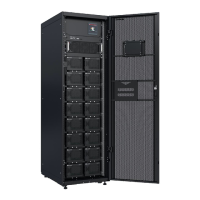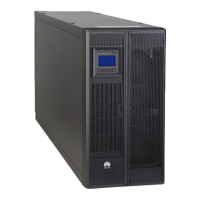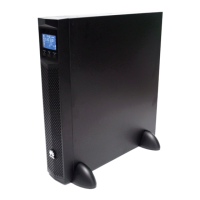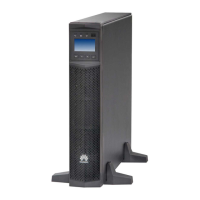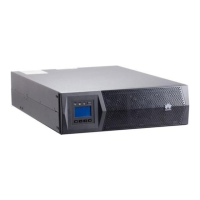UPS5000-E-(50 kVA-300 kVA)
User Manual (50 kVA Power Modules)
Copyright © Huawei Technologies Co., Ltd.
7 Troubleshooting
If the UPS is faulty, alarm information is displayed on the LCD. Clear critical alarms
before powering on the UPS again. Otherwise, the fault scope expands or the UPS is
damaged.
Do not clear alarms by reseating modules.
Remove a faulty module after it is confirmed that the module needs replacing. After
removing the module, do not insert it into the UPS again.
After a UPS finishes troubleshooting and is started, if the LCD continues displaying alarm
information, choose System Info > Alarms > Clear Faults to clear the alarm and then
start the inverter.
When batteries reach EOD, the battery switch in the BCB box trips if the BCB box is
configured. To restore battery discharge, close the battery switch in the BCB box (if any)
first.
To restore battery discharge after batteries reach EOD, use one of the following methods: 1.
Switch to another battery string. Ensure that each battery has a voltage greater than the
EOD voltage and 11.3 V/cell. 2. Restore the mains power supply to start the inverter.
Close the battery switch and charge batteries until each battery has a voltage greater than
the EOD voltage and 11.3 V/cell.
For details about how to rectify common faults, see Table 7-1. If any unmentioned faults
occur, see the alarm list chapter, or contact Huawei technical support.
Table 7-1 Troubleshooting
The rectifier is not
working, and the bus
voltage is not boosted.
The mains voltage
exceeds the upper
threshold 280 V or is
less than the lower
Check whether the
mains voltage exceeds
the threshold. If yes,
contact the electric

